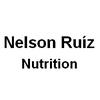Explore all the information on
Feed processing and manufacturing
Welcome to the page about Feed processing and manufacturing of Engormix; a source of knowledge on Feed processing and manufacturing.
In this interview, Christian Rabe, Head of Feed Technology at Evonik Animal Nutrition, shares practical insights on key issues like mixing homogeneity, dosing accuracy, and the technological solutions that help feed mills enhance efficiency without compromising quality. ...
Comments : 0
Recommendations: 3
INTRODUCTION Feed particle size is an often-overlooked aspect of poultry production. Producers should not assume that feed is of a uniform size and homogeneously mixed, or that the feed mill is providing the ideal mix of particles in a ration. Feed particles range in size from very fine to coarse, and different grinding methods will result in different particle size distributions. Differences in particle size within a ration can affect both the digestive system and the...
Comments : 0
Recommendations: 1
1. Introduction Chickens have a well-developed trichromatic vision system composed of diverse photoreceptors and cones [1], allowing them to perceive a broad range of the color spectrum [2]. Chickens can see in ultraviolet wavelengths and perceive colors that are not visible to most mammals [3], including humans [4]. The chickens’ sharp visual capabilities allow them to effectively survey their surroundings and localize feed [5,6]. In addition, broiler chickens have shown...
Comments : 1
Recommendations: 2
1. Introduction Soybean expeller (SBE), a by-product obtained during the extruding-expelling process of soybean oil extraction [1], is highly valued as a protein-rich component in animal feed and soy-based food products [2–5]. In Argentina, nearly one million tons of SBE are produced annually [6] in 373 extruding-expelling facilities, primarily located in the Pampa’s region [7]. The average composition of SBE in Argentina is 7.2% moisture, 44.2% protein, and 8.1% residual...
Comments : 0
Recommendations: 1
ARLINGTON, Va. – May 21, 2025 – The Institute for Feed Education and Research (IFEEDER) held its Board of Trustees annual meeting on Tuesday to discuss its current projects and install new Board leadership and trustees.
"IFEEDER has made significant progress in...
Comments : 0
Recommendations: 0
ARLINGTON, Va. – May 21, 2025 – The American Feed Industry Association (AFIA) has released its 2025-26 policy priorities, reaffirming the animal food industry’s commitment to advancing policies that improve the business environment for U.S. animal food manufacturers. The new policy agenda focuses on improving the regulatory environment for new ingredients, expanding access to animal food solutions and enhancing market competitiveness while promoting feed...
Comments : 0
Recommendations: 0
James Wen (Evonik Animal Nutrition) explains how NIR calibration helps address feed ingredient variability by measuring factors like trypsin inhibitors and reactive lysine, ensuring consistent quality and nutrient balance for optimal animal performance.
...
Comments : 3
Recommendations: 2
Extrusion has been used to prepare animal feeds for many years and has proved to be an effective means to cook and shape raw ingredients into very specialized products, especially in the highly competitive pet food market where size, shape, mouth feel and degree of cook are important factors in the success of the product. During the past 25 years the commercial raising of fish for human food consumption has grown rapidly and this has opened up opportunities for the fish feed industry to...
Comments : 15
Recommendations: 3
Ottawa, ONTARIO — The countdown is on for the 9th annual Animal Nutrition Conference of Canada (ANCC) taking place May 7–9 in Niagara Falls, Ontario. With early bird registration ending April 11, now is the time to lock in...
Comments : 0
Recommendations: 1
An interview with Pablo A. Fernández Moriana, Director of Sales and Management at CPM Pacific, discussing the key challenges faced by feed manufacturers in Southeast Asia, the impact of sustainability trends on feed production, and the technological innovations CPM offers to enhance product efficiency and quality....
Comments : 0
Recommendations: 0
Introduction During the feed pelleting process conditioned feed mash is passing through the pellet press die where animal feed pellets are formed by rheological properties of the mash and different mechanical forces applied on that mash. Different sized animals eat different sized feed, therefore cutting, thus uniformity of feed pellets is essential procedure for feed producers. In the end...
Comments : 29
Recommendations: 0
Nelson Ruiz (Nelson Ruiz Nutrition, LLC) shares an overview of his research on KOH solubility, trypsin inhibitors, and over and underprocessing in this Engormix interview during IPPE 2025 in Atlanta, USA....
Comments : 0
Recommendations: 0
Join Matt Boland (CPM) as he explores how AI can drive real-time production adjustments to boost feed mill efficiency. Discover the importance of robust OT networks and advanced sensors in optimizing systems, and dive into the evolution toward fully autonomous “lights-out” facilities, shaping the future of production....
Comments : 0
Recommendations: 0
Matt Boland (CPM) shares practical steps to get your feed mill ready for the future of self-optimizing systems. Position your operation for increased production, reduced waste, and consistent quality by implementing smart, forward-thinking strategies for long-term success....
Comments : 0
Recommendations: 0
INTRODUCTION The United States is the largest producer of beef in the world, with over 11 million head of beef cattle in feedlots at any given time (as of May 2020; USDA, 2020). Corn is one of the most important ingredients in feedlot cattle diets because it is in expensive and energy dense. Mechanical processing of corn has been used in the feedlot industry for decades to increase starch digestibility, and, conse quently, improve growth performance and carcass characteristics...
Comments : 0
Recommendations: 1
Introduction Over the last two decades the U.S. fuel ethanol industry grew exponentially. Now, large quantities of ethanol coproducts, are commonly available as feedstuffs for livestock both in the USA and in international markets. As described elsewhere, ethanol coproducts are added to livestock diets (both ruminants and monogastrics) primarily as sources of protein and energy, but other nutrients also, including spent yeast cells. Energy is provided by fat, fermentable fiber, and...
Comments : 0
Recommendations: 1
Lara Moody (IFEEDER) shares her insights regarding inclusion rates and circularity of ingredients in this Engormix interview during IPPE 2025 in Atlanta, USA....
Comments : 0
Recommendations: 0
Tarik Flkenburg, International Sales Manager at Jacob's Global, shares how the company delivers premium spare parts and expert technical support to boost efficiency and performance in milling operations worldwide. ...
Comments : 0
Recommendations: 1
Nakul Vakil, Managing Director at Cremach Private Limited, shares insights into India's rapidly growing animal feed industry and how strategic partnerships with global leaders like Mr. Josef Barbi from ESE & INTEC deliver top-quality, cost-effective feed plants across India and abroad. ...
Comments : 0
Recommendations: 0


.jpg&w=3840&q=75)

.jpg&w=3840&q=75)
























